This post was updated at 10:35 p.m.
Providing a portal between past and present, Chinatown’s murals capture the history of the neighborhood and its residents.
Many artists drew inspiration from their personal experiences and heritages to paint these works throughout Chinatown, helping to preserve their cultural legacy for future generations.
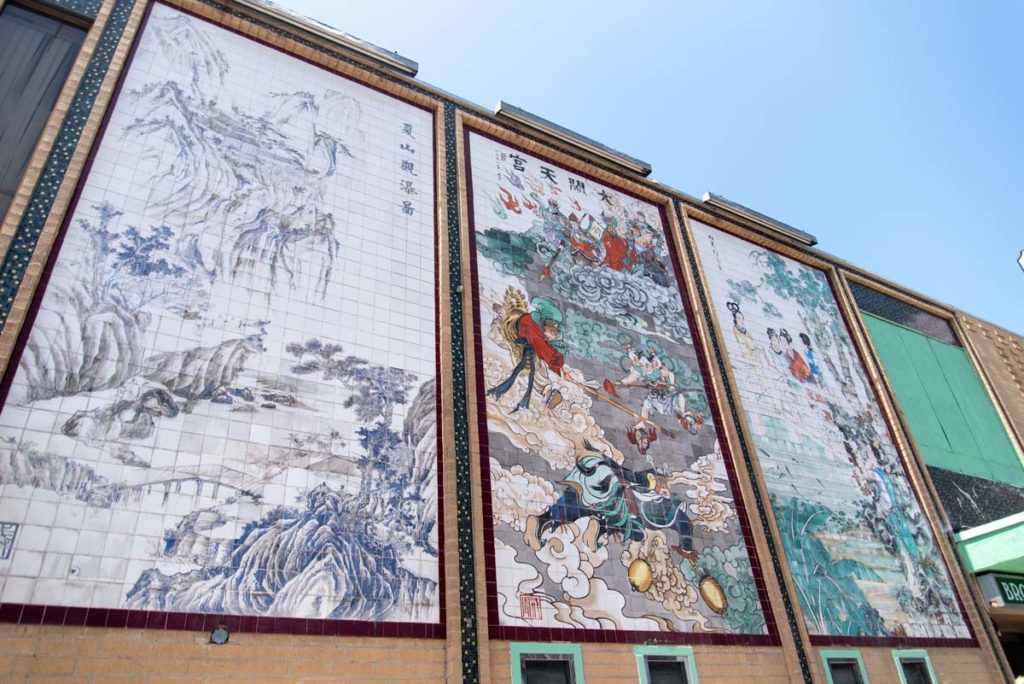
The triptych, painted in 1968 by an unknown creator, consists of the works “Picture of Viewing Waterfalls in Summer Mountains,” “Palace in Heaven” and “Four Beauties Catching Swimming Fish” from left to right.
The middle panel depicts a battle scene from the novel, “Journey to the West,” said Eugene Moy, a member of the board of directors for the Friends of the Chinese American Museum. He said the main character, a monkey, is a superhero for Chinese children.
The rightmost panel follows classical styles, he added, reflecting the period of transition between ruling eras in China.
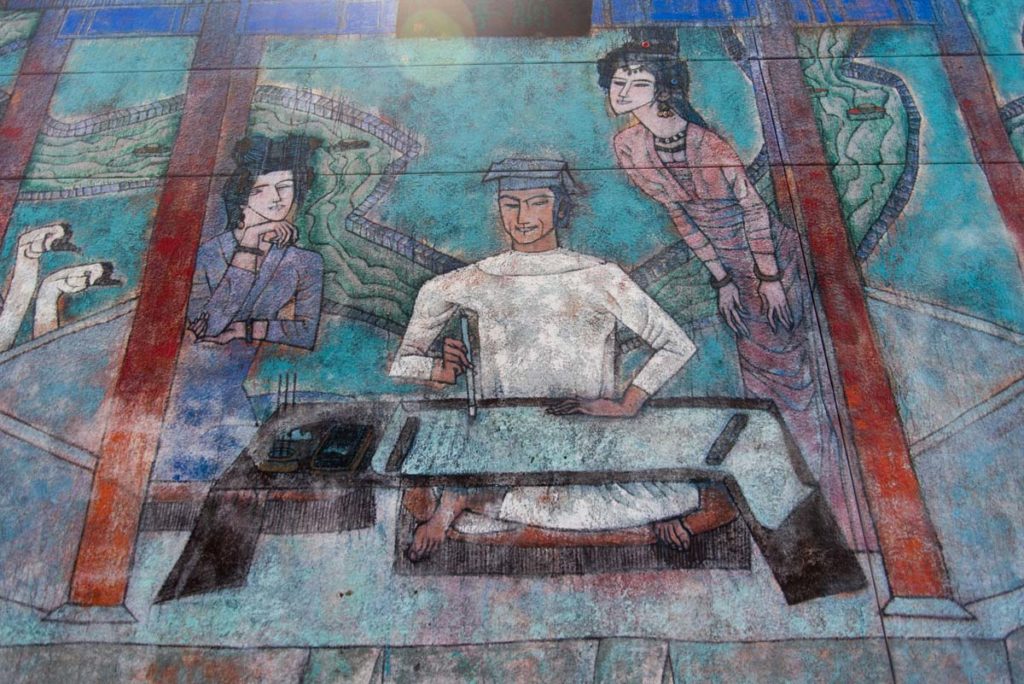
Zhang Shiyan’s “The Party at Lan-Ting,” painted in 1991, depicts calligrapher Wang Xizhi documenting the party around him on a scroll. This event became an important piece of Chinese art history, as that documentation later became the preface to a famous set of poems, said LJ Isorena, a fourth-year Asian American studies student and intern at the museum.
The mural was created in collaboration with the Social and Public Art Resource Center, which encourages young people to learn the techniques of painting, Moy added. As such, he said, murals like these were not just painted by one person but often multiple people.
The mural originally had gemstones embedded in the artwork, he added, but the piece has been vandalized over time and many have been gouged out.
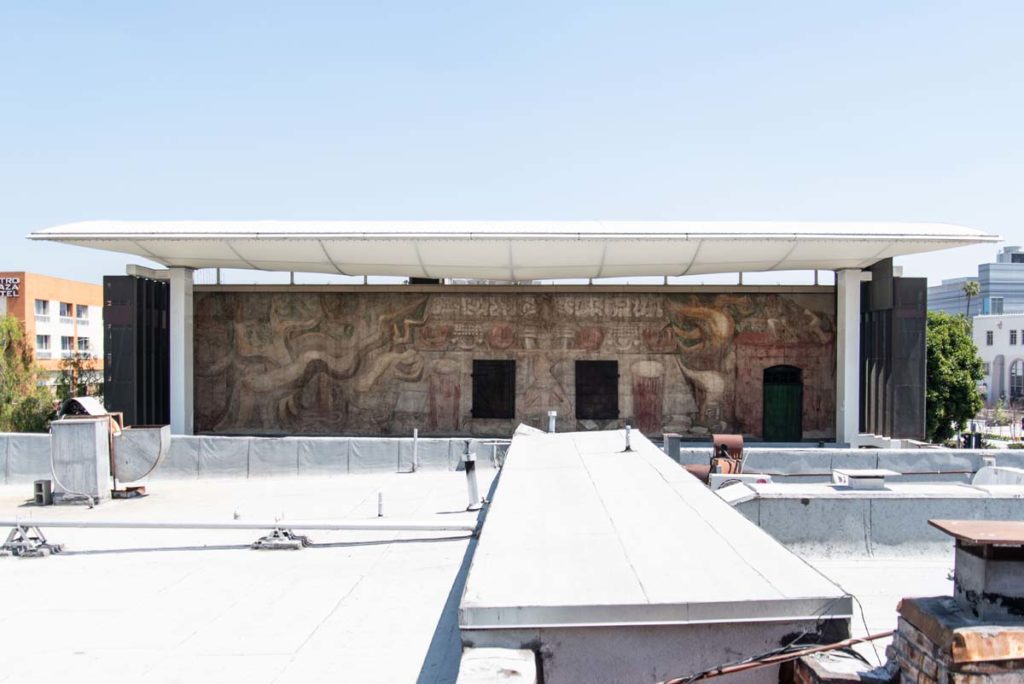
David Alfaro Siqueiros, whose “América Tropical” is located on one wall of the Italian American Museum, believed art served to empower people, said museum guide Michelle Garcia-Ortiz. She said the mural, painted in 1932, features two proletariat revolutionaries on the upper right taking aim at an eagle perched on top of a crucified Indigenous man.
The common interpretation, she said, is that capitalist North America sacrificed Indigenous people for its own gain, leaving their civilizations in ruins.
The mural, now faded, only survives because of a coat of whitewash from a previous attempt to censor the piece, Garcia-Ortiz said. Siqueiros secretly added the depiction of the crucified man the day before the mural was unveiled, she said, hoping to shed light on the struggles of common people during the Great Depression that had been overshadowed by the Olympic Games.
“That is his legacy,” she said. “He just wanted to help make life better.”
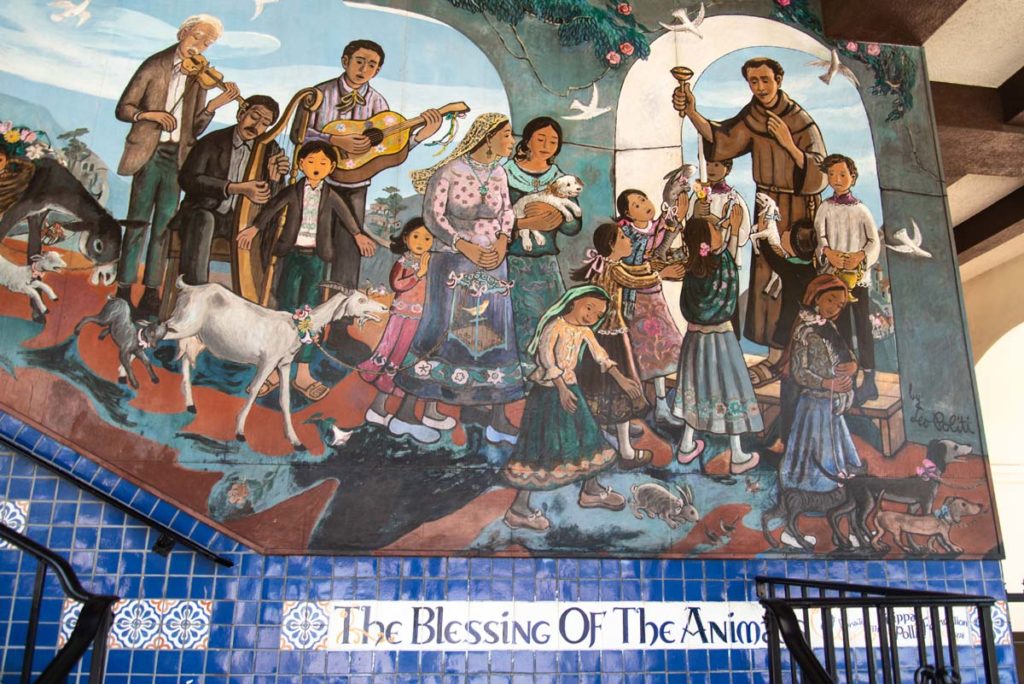
Leo Politi’s “Blessing of the Animals,” painted in 1974, depicts a ceremony observed in many Latino countries on the Saturday before Easter when members of the community will bring their pets to be blessed by the archbishop, Garcia-Ortiz said.
Politi used his art to celebrate neighborhoods primarily populated by people of color, Garcia-Ortiz said, including El Pueblo and Olvera Street, where the mural is located.
“He knew he was in a time very similar to our own, where historic neighborhoods were being … transformed dramatically,” she added. “And he used the only weapon he had; he used art to immortalize and show the beauty and love of these neighborhoods.”
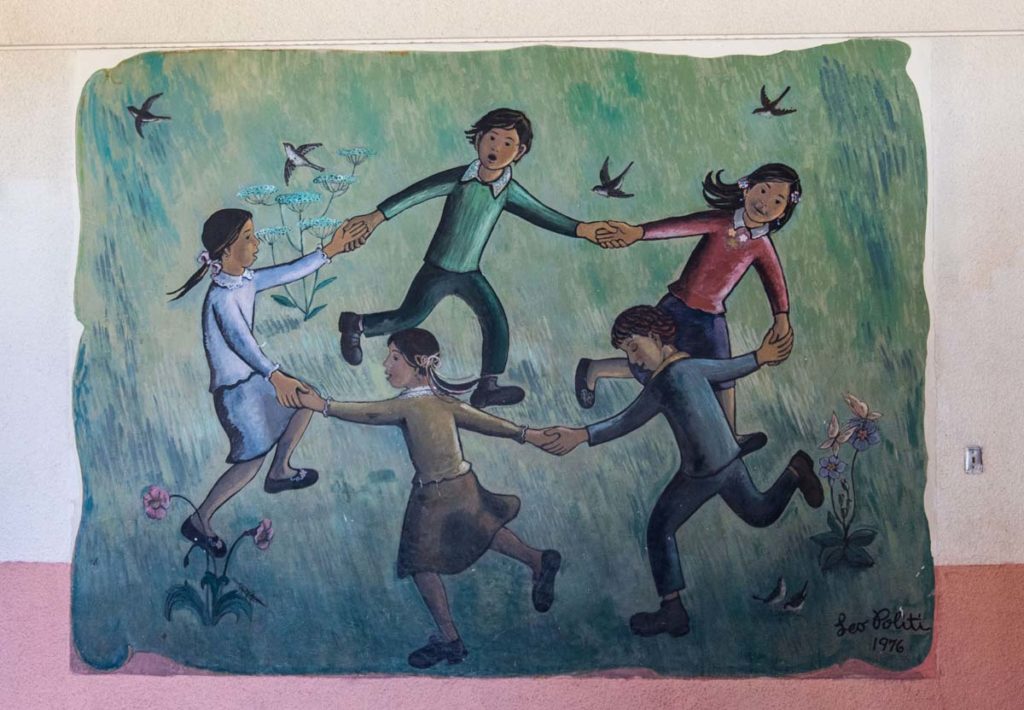
An untitled mural painted in 1976 by Politi is located inside Castelar Elementary School, the only public school in Chinatown, Moy said. A sign outside displays information in Spanish and Chinese, the two dual-language programs offered by the school, he said.
In the 1970s, students from UCLA, University of Southern California and Occidental College would tutor students here, Moy added. This service provided support for kids who were transitioning and adjusting to life in the United States after coming from lives in Vietnam, Hong Kong, or Cambodia.
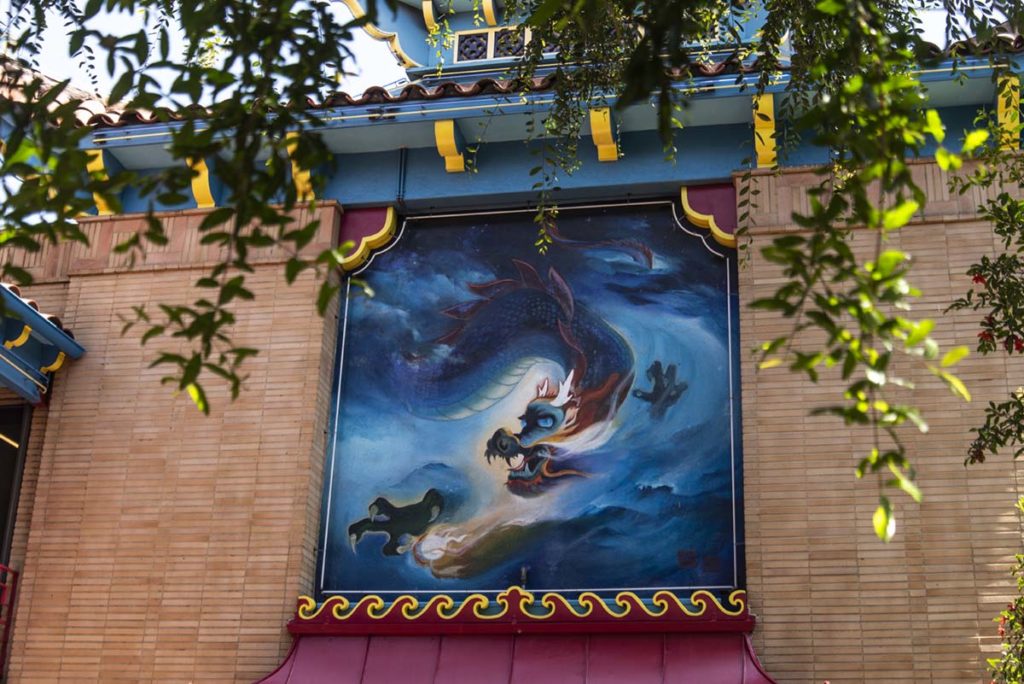
Tyrus Wong’s “Chinese Celestial Dragon,” painted in 1941, reflects the artist’s classical training, skills that he brought to The Walt Disney Company and movies such as “Bambi,” Moy said. The mural is adjacent to a central plaza and is located on buildings that once belonged to You Chung Hong, the first Chinese American lawyer in Los Angeles, he said.
He added that the current mural, which was restored, is brighter than the original, which more closely resembled the watercolors Wong favored.
“There’s ongoing change in Chinatown,” Moy said. “That’s a continuing story.”
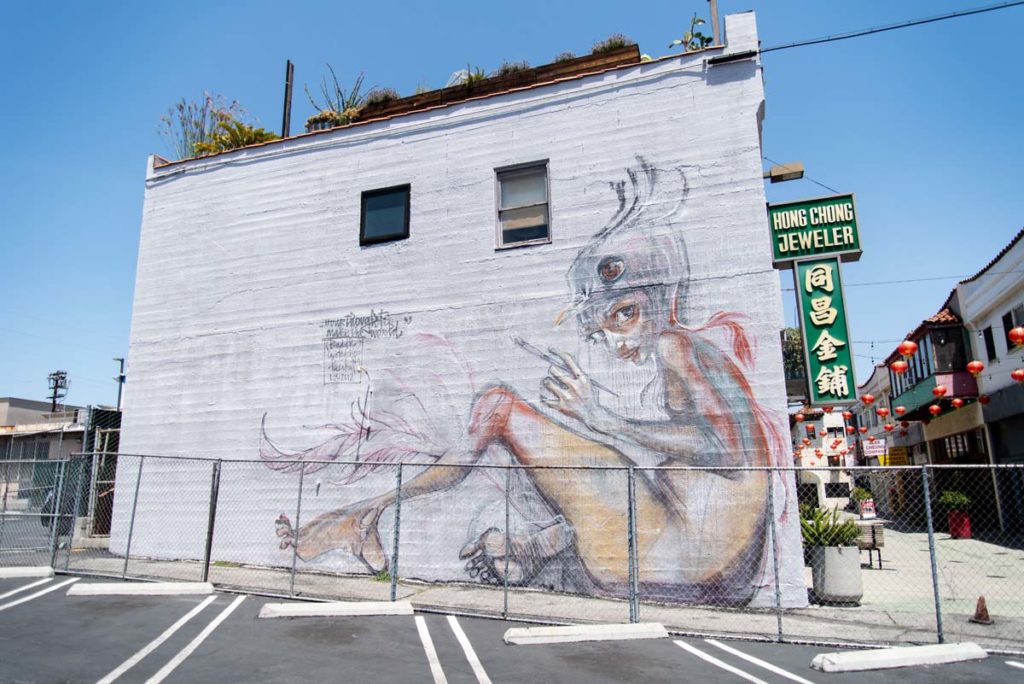
(Anika Chakrabarti/Assistant Photo editor)
Herakut’s “With Our Thoughts We Make the World,” painted in 2012, employs the German duo’s trademark experimental and photorealistic styles with the use of spray paint and dripping, Isorena said. The mural depicts a nude woman with a bird crowning her forehead.
The mural is located near Chung King Road, part of New Chinatown, Moy said. He said the region was created as a commercial project to support merchants displaced from Old Chinatown. In the 1980s and 1990s, many families were forced to move out to the suburbs because of race restrictions, he added.
Now, Moy said, many of the galleries and art studios have become working spaces and offices, a reflection of the demographic shifts in Chinatown.
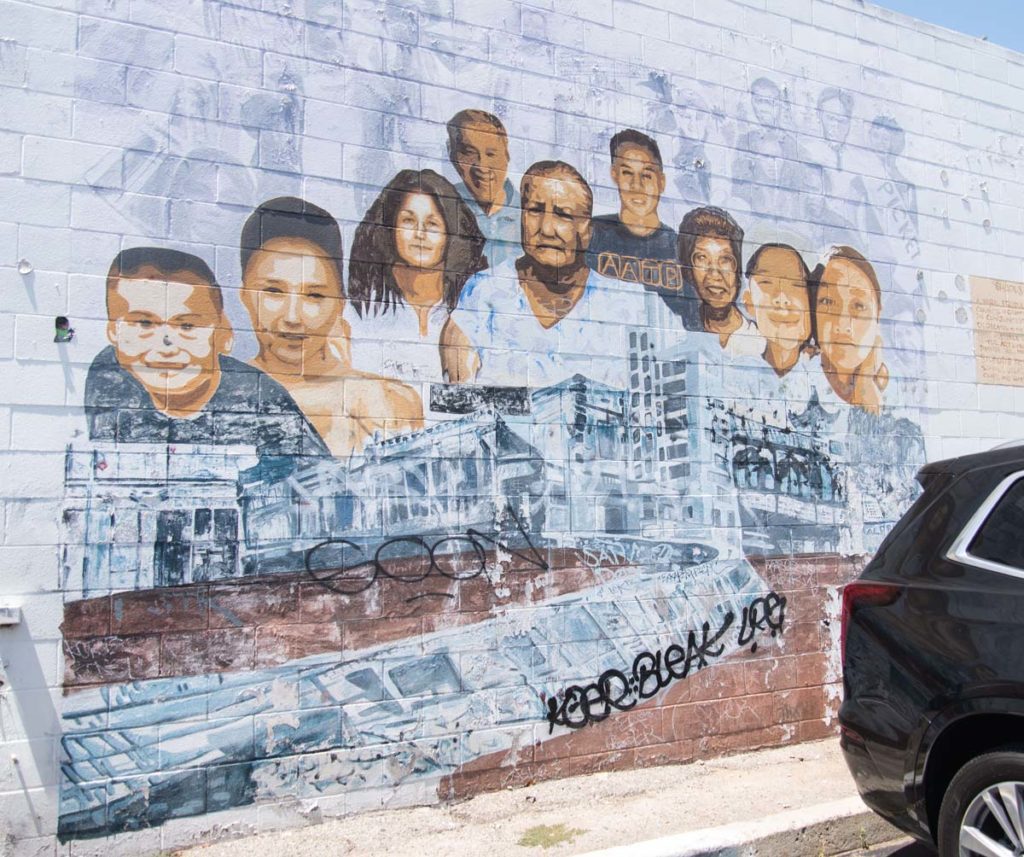
“Shades of Chinatown” was developed in 2003 by Steven Wong, who was formerly the curator of the Chinese American Museum, in collaboration with the Youth Leadership Council of Chinatown and Lincoln Heights and the UCLA Asian American Studies Center. The mural reflects the diversity of the Chinatown community by including well-known figures, Moy said.
As the population has declined, developers have begun pushing to build high rises and increase population density, he said, adding that this might not necessarily be what the community needs.
These changes, Moy said, may not integrate into the existing commercial network and established lives of the people already in Chinatown.
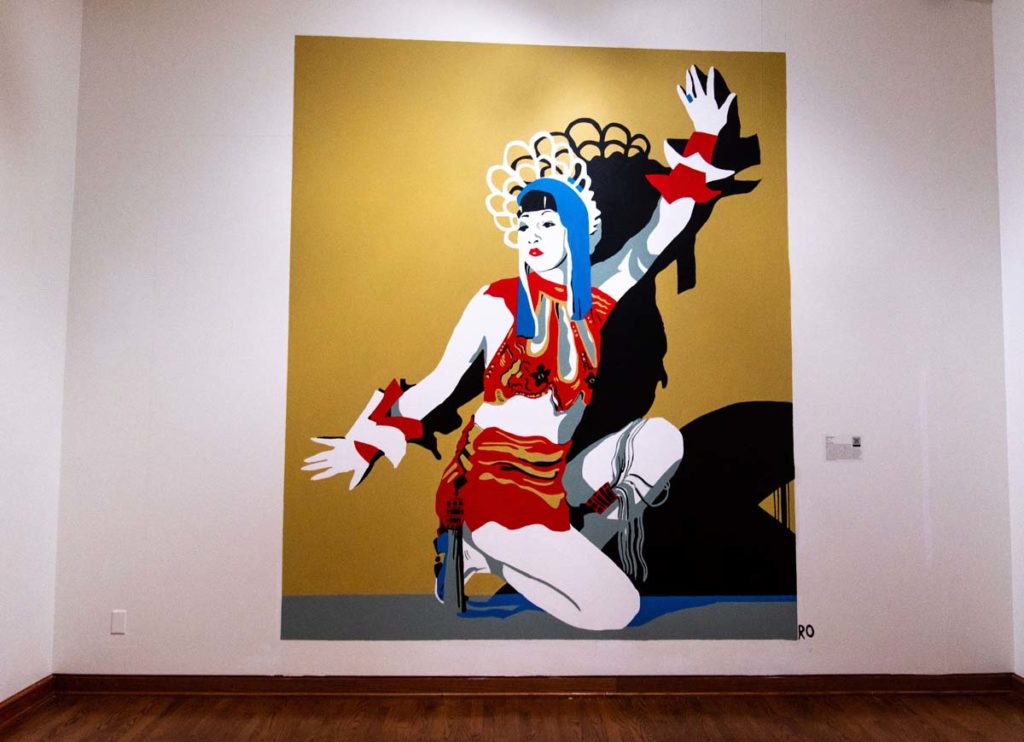
The Chinese American Museum’s latest exhibition, “Collective Resilience,” brought seven artists together to share the positive stories and experiences of Chinese Americans in light of the increased discrimination the community has faced in recent years, said Michael Truong, the museum’s executive director.
The curators included a mural depicting actress Anna May Wong because of Wong’s struggle to follow her passion despite the racism she faced, which humanizes the difficulties many Chinese Americans faced, Truong said.
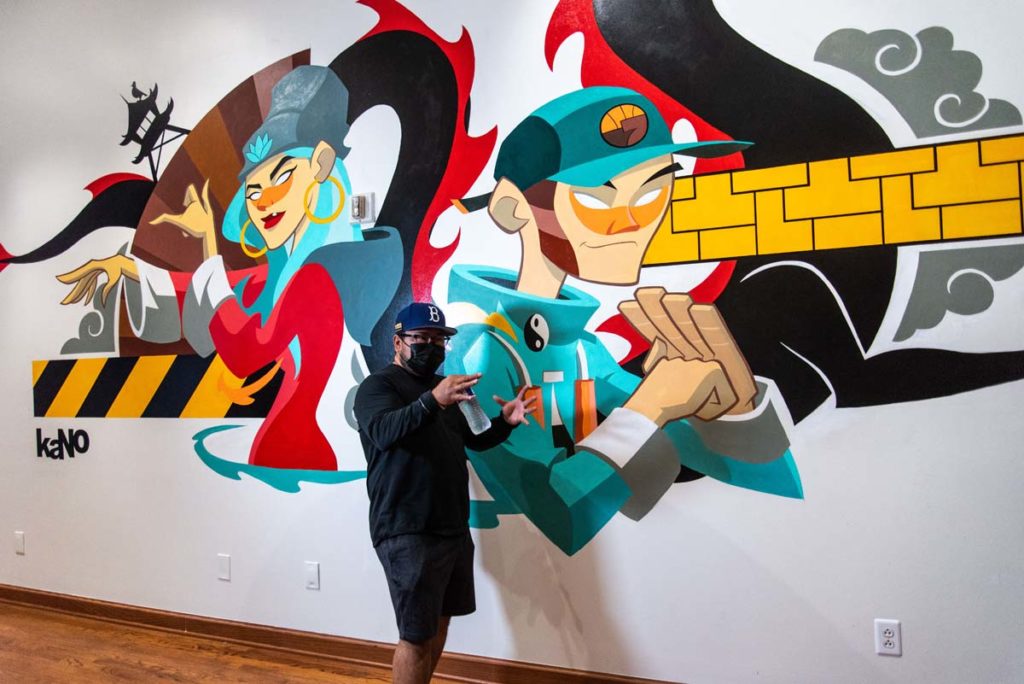
Featured artist kaNO said the wide range of symbols in his mural “Urban Rendition” reflects his own diverse background and upbringing in New York City. He added that the piece also emphasizes more general themes of strength and determination, which the mural allowed him to represent on a large scale.
“Through that collectiveness, there’s power. There’s resilience there,” he said. “You can overcome odds.”
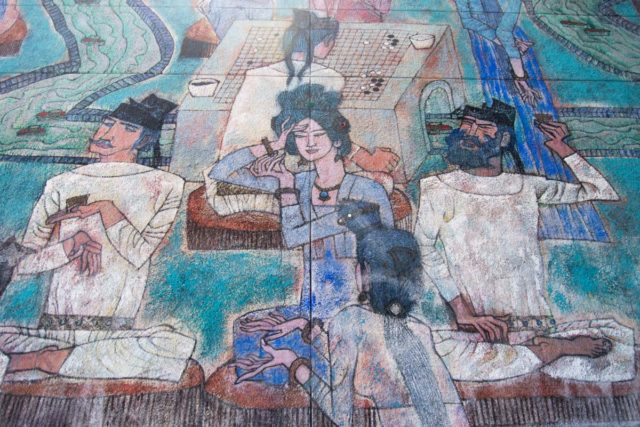

Comments are closed.